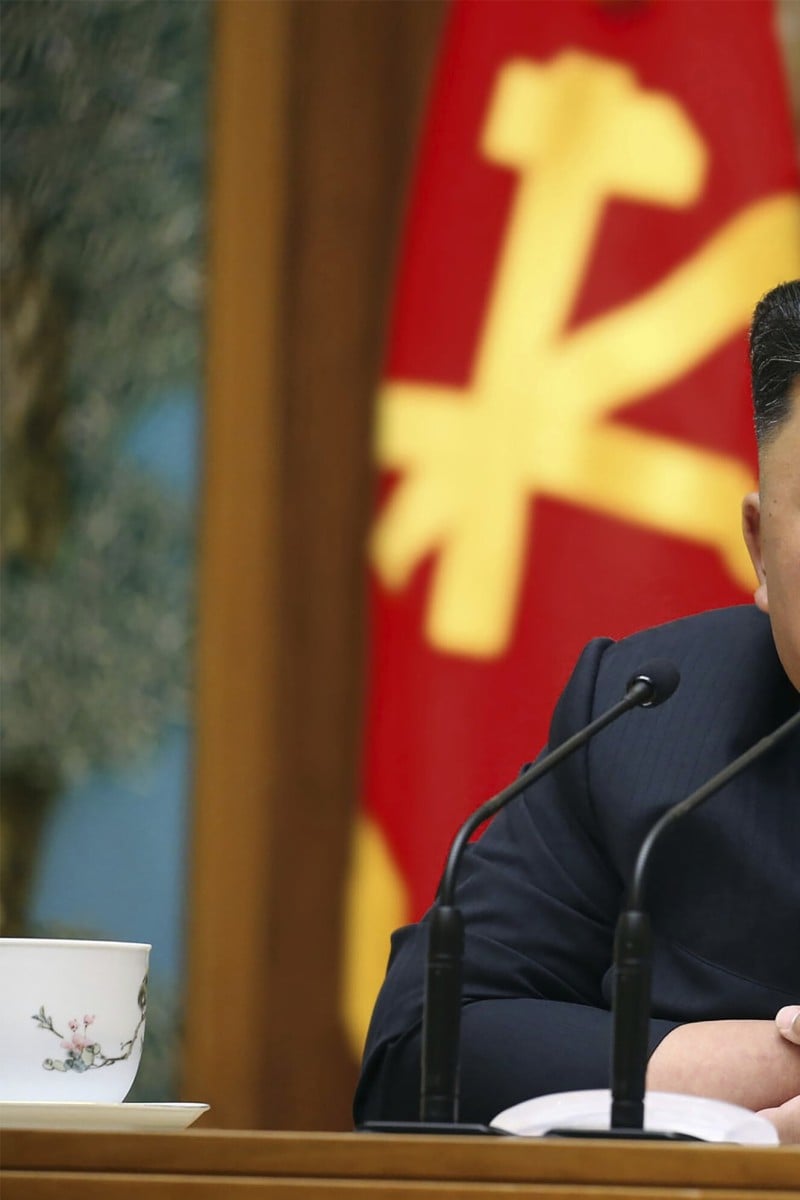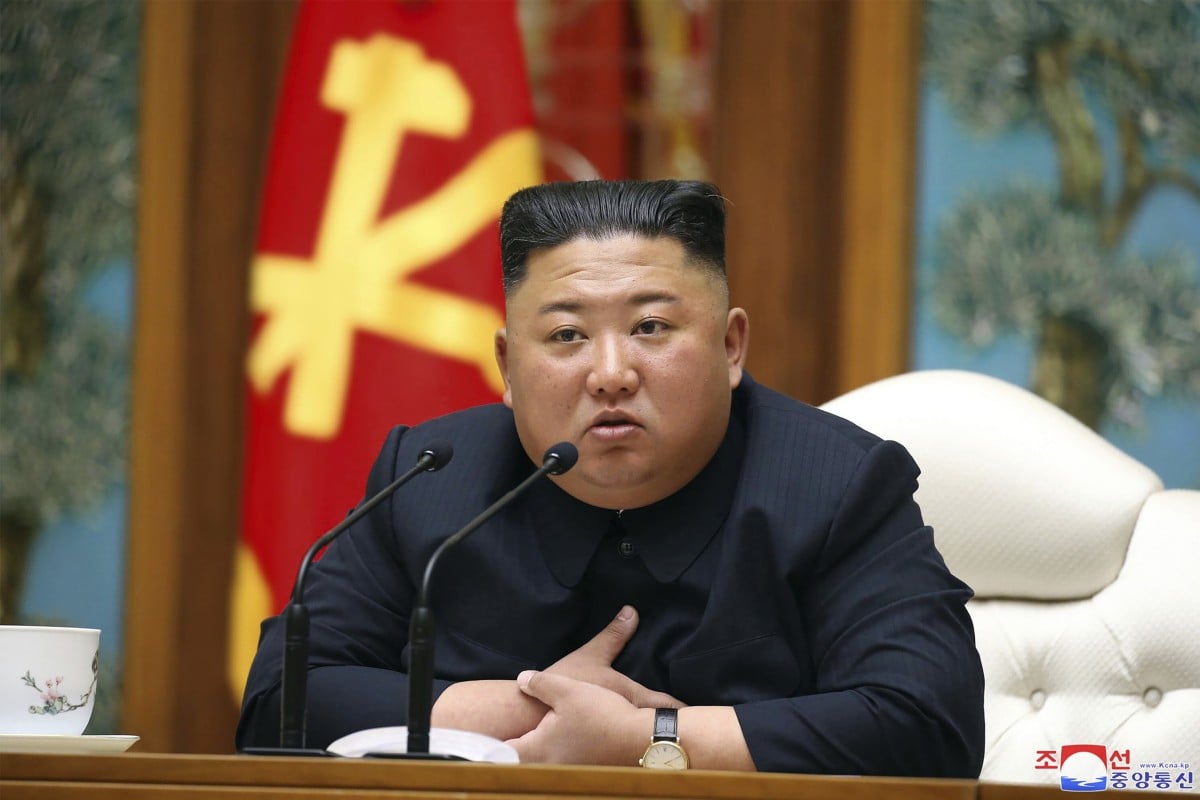
- Speculations about Kim’s health started after he missed a key state anniversary event on April 15
- Sister Kim Yo-jong has been the most visible presence around the leader in the past two years
 File photo of North Korean leader Kim Jong Un. There have been speculations about his health after he missed a key event on April 15.
File photo of North Korean leader Kim Jong Un. There have been speculations about his health after he missed a key event on April 15.North Korea has never formally announced who would succeed Kim Jong-un as supreme leader if he is incapacitated. With few known details about his young children, analysts say his sister and party loyalists could serve as regents until a successor is old enough to take over.
South Korean and Chinese officials have publicly cast doubt on reports that Kim was gravely ill following a heart procedure, after his absence from a key state anniversary event on April 15.
But the media reports sparked questions about who is in place to take over if Kim, thought to be about 36, a third-generation hereditary leader, fell seriously ill or died. He became leader when his father Kim Jong-il died in 2011 from a heart attack.
Should North Korea give up their nuclear weapons?
Each change at the top in North Korea has raised the prospect of a leadership vacuum or collapse of the Kim dynasty, which has ruled the country since its founding in 1948.
So far, each of the three Kims to rule North Korea has defied expectations, holding on to power with an iron grip. But under Kim Jong-un, North Korea’s arsenal of nuclear weapons and ballistic missiles has grown substantially, raising concerns over who would control them.
The following are key figures in the North Korean leadership circle and what role they may play in any transition.
Kim Yo-jong
Kim Yo-jong, sister of North Korea's leader Kim Jong-un has been a visible presence at international events in the past two years. Kim’s younger sister has been the most visible presence around the leader in the past two years, serving formally as a vice director of the ruling Workers’ Party’s powerful Central Committee but unofficially as her brother’s chief of staff.
Kim Yo-jong was named an alternate member of the ruling Workers’ Party’s powerful Central Committee Politburo this month, continuing her climb through the leadership hierarchy.
The leader’s sister, believed to be 31, has a firm control of key party functions, setting herself to be the main source of power behind a collective leadership.
Party elders
Choe Ryong-hae (left) is the nominal head of state of North Korea and is the president of the Presidium of the Supreme People's Assembly.Choe Ryong-hae rose to be North Korea’s nominal head of state last year as president of the Presidium of the Supreme People’s Assembly.
This capped decades of service with the party for the ruling Kim family, following his role as the influential political head of the military under the young leader.
Choe and Pak Pong-ju, a fellow politburo member and former state premier who oversaw the North’s push to introduce more free-market functions to revive its economy, are likely to be the figureheads leading a collective leadership, analysts say.
Kim Yong-chol, a party vice chairman and former top nuclear envoy not related to the Kim dynasty, and Foreign Minister Ri Son-gwon could be tasked with handling diplomatic issues, including stalled denuclearisation talks with the United States, as they played a key role in Kim Jong-un’s summits with US President Donald Trump.
Creators of K-Drama Crash Landing on You explain the making of the series
Estranged brothers, aunt
Kim Jong-chol is the leader’s older brother but has not been part of the country’s leadership, instead leading a quiet life playing music, according to Thae Yong-ho, North Korea’s former deputy ambassador in London, who defected to the South.
He is believed to be disinterested in public life and is unlikely to emerge as a major presence, though some analysts say he maintains ties with siblings and could play a more public role in a contingency.
Kim Kyong-hui was once a powerful figure in the leadership circle when her brother Kim Jong-il ruled the country. But she has not been seen since her husband, Jang Song-thaek, once regarded as the second most powerful man in the country, was executed in 2013 by Kim Jong Un. She has long been ill but briefly appeared early this year at a gala performance alongside her nephew.
Fourth generation
Kim Jong-un is believed to have three children with Ri Sol-ju, the youngest born in 2017, according to the South’s National Intelligence Service.
The oldest is a 10-year-old son, meaning any of the three would need the assistance of their relatives or political guardians if they were to become a fourth-generation hereditary leader.
Kim Jong-il had been groomed for 20 years to lead the country, while Kim Jong-un had just over a year to prepare, due to his father’s sudden death from a heart attack.